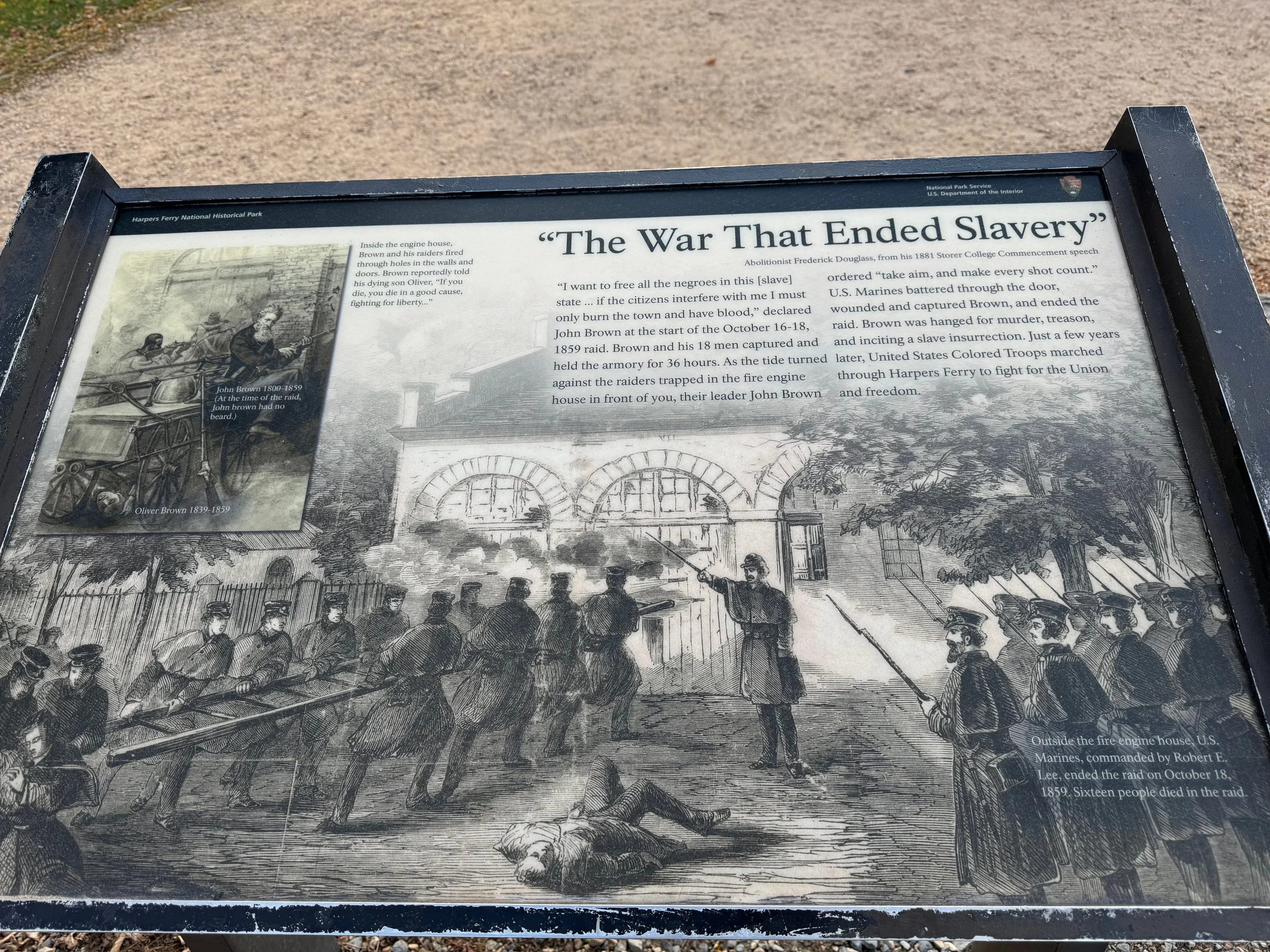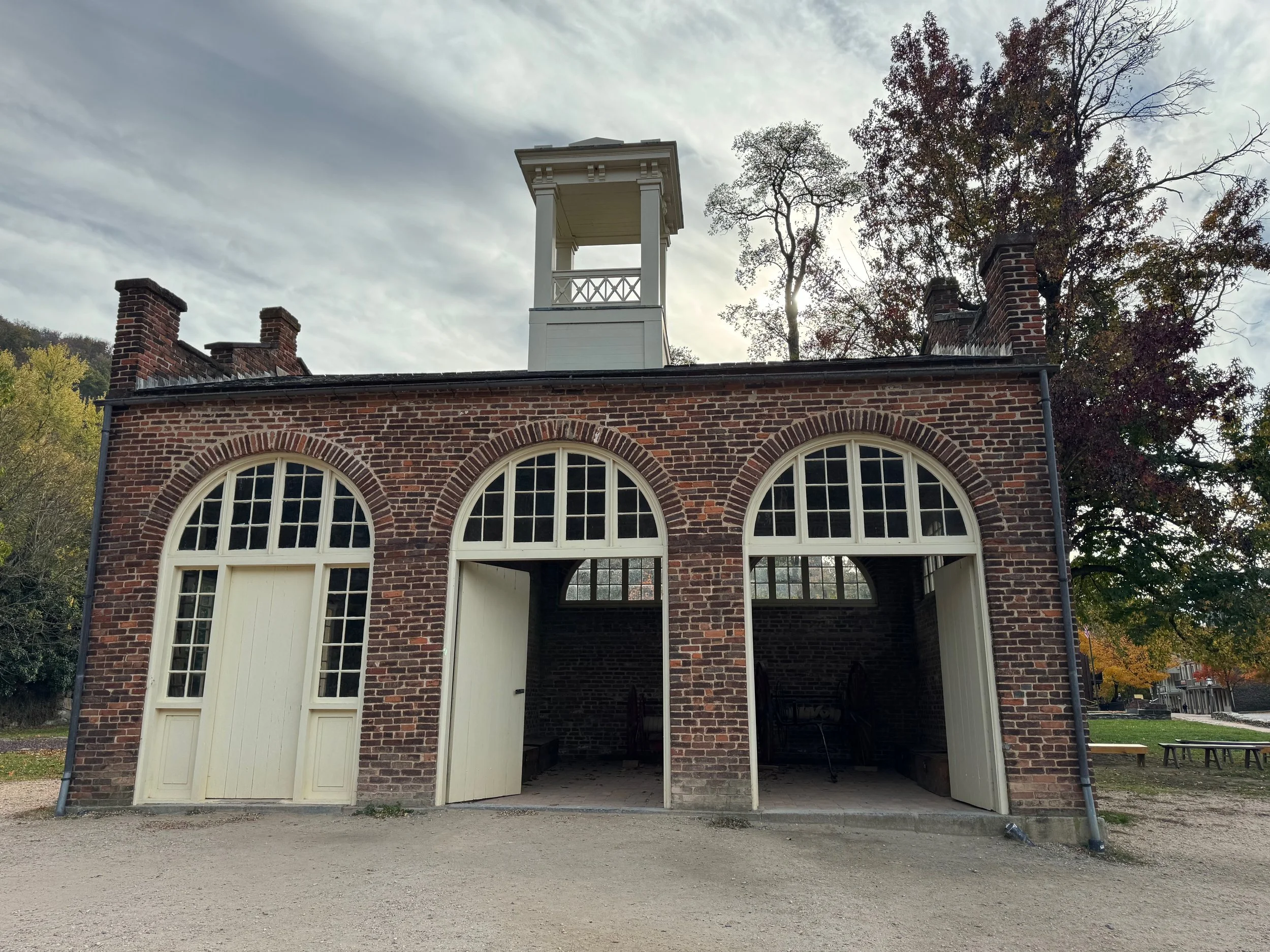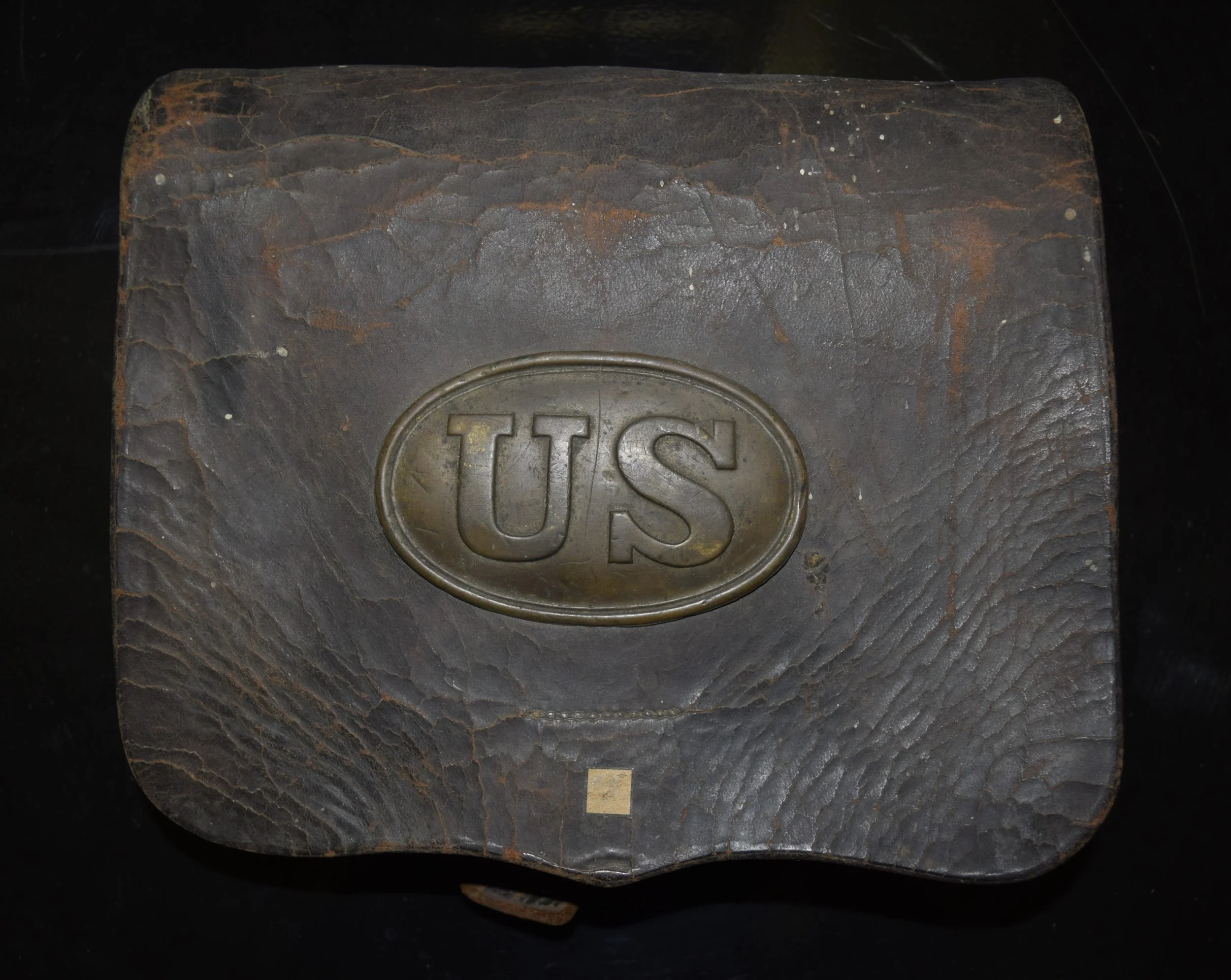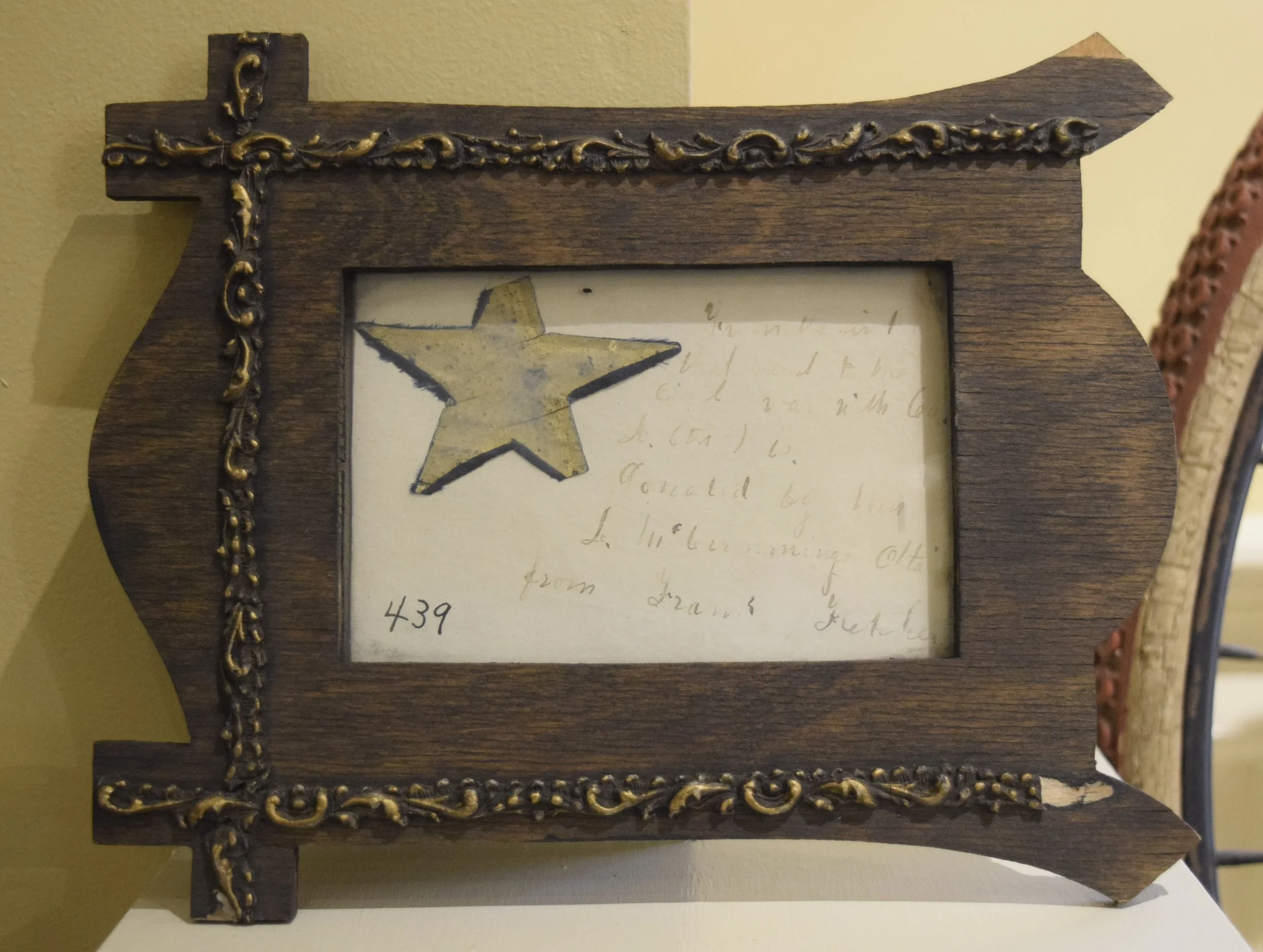A Civil War Star and Pike
A recent dive into our military collection at the Van Orden Mansion has revealed many unique pieces of Civil War history. SCHS members Marc and Beth Storch have kindly volunteered their time to inventory and research these items to help us better share their stories. Marc and Beth are avid volunteers for the Wisconsin Veterans Museum, and together they share their love of history by helping historical societies around the state with research and collections projects. Marc was also a Civil War re-enactor for several years and is a wealth of information on the subject. We are very grateful for their help! Recently, the project has revealed a few fascinating finds.
Civil War soldiers on both sides fought in often brutal conditions and utilized all sorts of different weapons, including new and old ‘technology’. An older style of weapon used was the ‘pike’. This metal spear was attached to a long wooden handle and was a formidable weapon against the opposing side. In our collection is a pike head, reportedly an example of a ‘John Brown pike’. In 1857, while in Collinsville, Connecticut abolitionist John Brown commissioned 1,000 of these pikes, with only 500 reportedly made. The pikes were eventually sent to the Kennedy Farm near Harpers Ferry, West Virginia, where John Brown planned to use them to arm enslaved African Americans.
On October 16, 1859, abolitionist John Brown led a raid on the federal armory at Harpers Ferry, Virginia (now West Virginia), with the goal of inciting a slave rebellion. Brown and his small group of followers were quickly surrounded by local militia and U.S. Marines under the command of Colonel Robert E. Lee. The raid was suppressed within two days. Brown was captured, tried for treason, and hanged. The event further heightened tensions between the North and South in the lead-up to the Civil War.
480 pikes were found in the farm’s tool shed and were then stored in the armory in Harpers Ferry. According to an article in the Baraboo News Republic dated April 10, 1923, (following the war) “The pikes were then sent to the arsenal at Rock Island to be rolled into new iron. The rolling mill had not been started in October, 1877, hence the pikes lay and rusted in a pile of condemned iron for years until, by a special order from the secretary of war, Col. D. W. Flagier was ordered to sell them…The pikes were then preserved as precious old relics”. Ours was secured by Jacob Tegerdine of Baraboo, and hung for many years in the Bank of Baraboo, before being donated to SCHS in 1923.
Also on display in the 19th Century exhibit room of the Van Orden Mansion is a silk star, framed with a short donor note from 1908, “From the first flag that went to the Civil War with Co. A 6th Wis. Donated by Mrs. L. McCummings. Obtained from Frank Fletcher. Frank Fletcher was a soldier in Co. A 6th Wis. which left Baraboo for Madison in June 1861 and mustered into service on July 16, 1861, to join the fight in the Civil War. The 6th Wisconsin Volunteer Infantry was part of the Iron Brigade (along with the WI 2nd and 7th) and was so named by General George McClellan after witnessing the brigade’s determination and steadfastness at the Battle of South Mountain. The Iron Brigade fought in several major battles of the war including the Second Battle of Bull Run, Antietam, and Gettysburg. Franklin “Frank” Fletcher’s involvement in the company is mentioned in Phillip Cheek’s book, “Sauk County Riflemen”. Fletcher reportedly obtained the star when the flag was torn to shreds.
Due in part to the illustrious Civil War history of Sauk County and Wisconsin, SCHS is fortunate to have a well documented collection of Civil War artifacts, photographs, and archival material. Thanks to many SCHS volunteers, including Marc and Beth Storch, there are numerous resources available on the SCHS website for those interested in learning more about Sauk County’s Civil War history.








